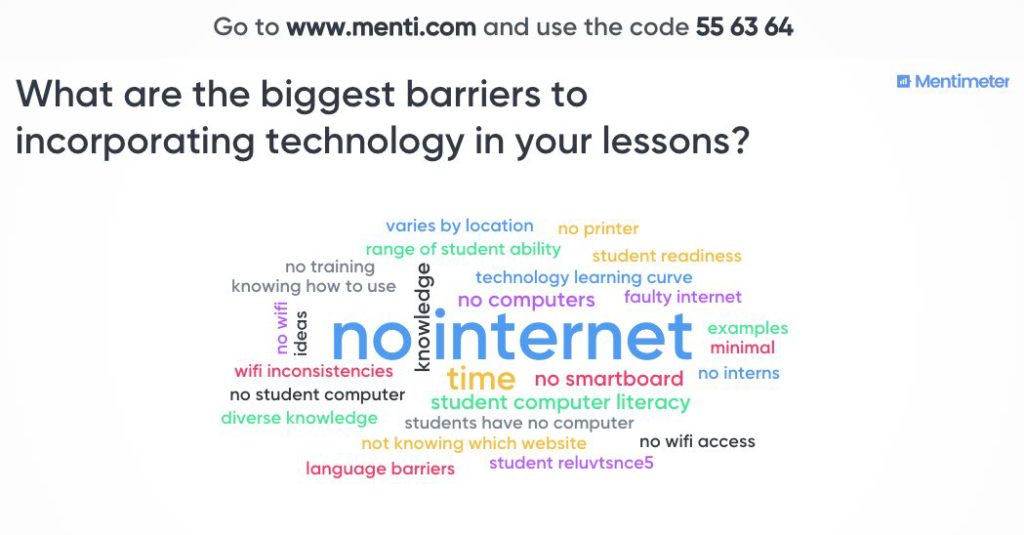Today, my pal and I presented at an Adult Education In-Service day. We shared our thoughts on “Integrating Technology into Instruction—Realistic Strategies for the Adult Education Classroom”. We’ve given versions of this session several times over the past six months. Early in our session, we talk about the fact that over 80% of middle-skills jobs (i.e., jobs that require more than a high school education but less than bachelor’s degree) require digital skills, but 65% of all adults in the US lack the skills to use technology to solve problems. That’s a whopper of a mismatch … and the number one reason why Jeff and I could find an audience to give our talk most weeks of the year.
In my not scientific (but I’ve been around a while) guestimation, Adult (basic skills) Education is about 15 years behind the edtech adoption curve from k12. There are a host of reasons why I feel they lag behind, but why hear my opinion when you can hear directly from the teachers.
Jeff and I launch each session with a Menti poll asking the teachers to use their smartphones to answer a couple of questions regarding technology use in their classes. Here are the responses we got today for our prompt, “What are the biggest barriers to incorporating technology in your lessons?”
This question and the resulting Wordle are crowd pleasers with the teachers. I start my portion of the session saying something like, “We all hear the drumbeat that educational technology is here to save/disrupt/transform/[fill in the blank] adult education, but let’s talk about the reality.” The words on the screen build in real-time as the participants’ answers are posted with the biggest words reflecting the responses posted most frequently. Each time we deliver a version of this session and post this question, we get similar barriers. Student computer literacy. No [teacher] training. Examples (i.e., lessons). No computers. Technology learning curve. Time. And … front and center, “No internet” with related “no wifi” and “no wifi access” off to the sides. Again, I think these are the same types of responses we would have seen in most k12 schools over a decade or so ago, and likely still see in some.
We then follow with this graphic presenting home broadband by education level from Pew Research. Yep, you’re reading this right. Less than 25% of adults in the US without a high school diploma have home broadband.
So, if students and teachers don’t have internet access or technology at school, and students don’t have broadband access at home, what are the teachers and their students to do? They get left (more and more) behind.


